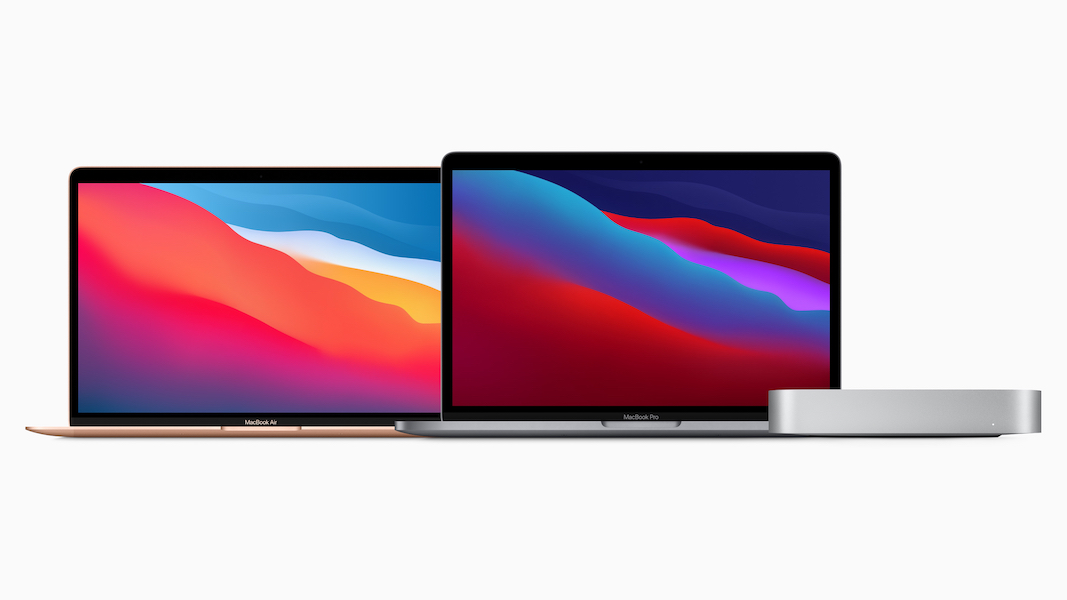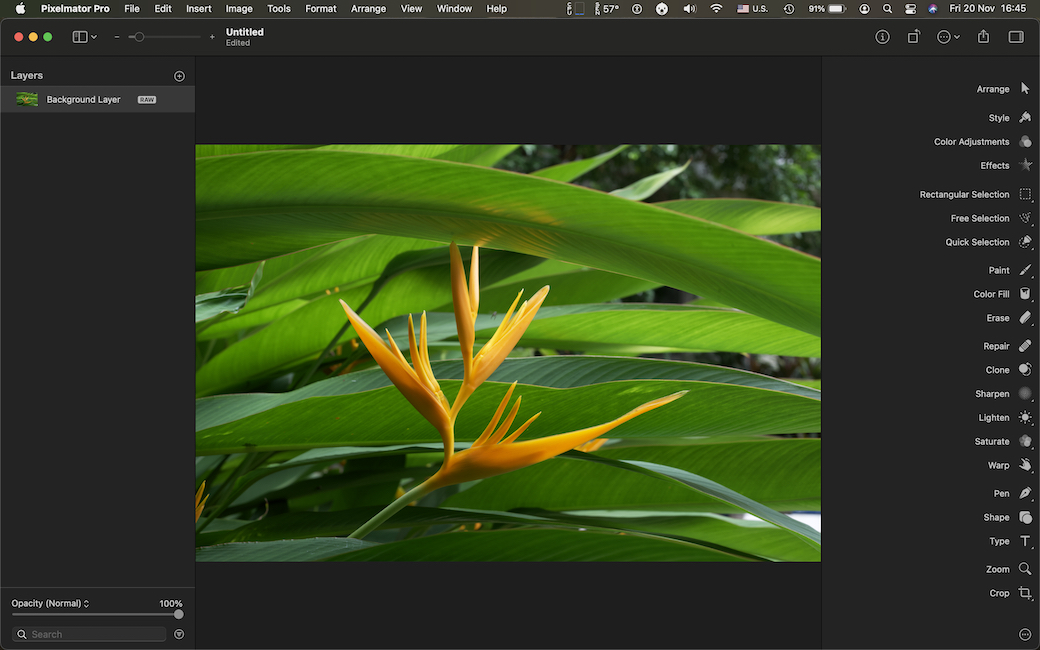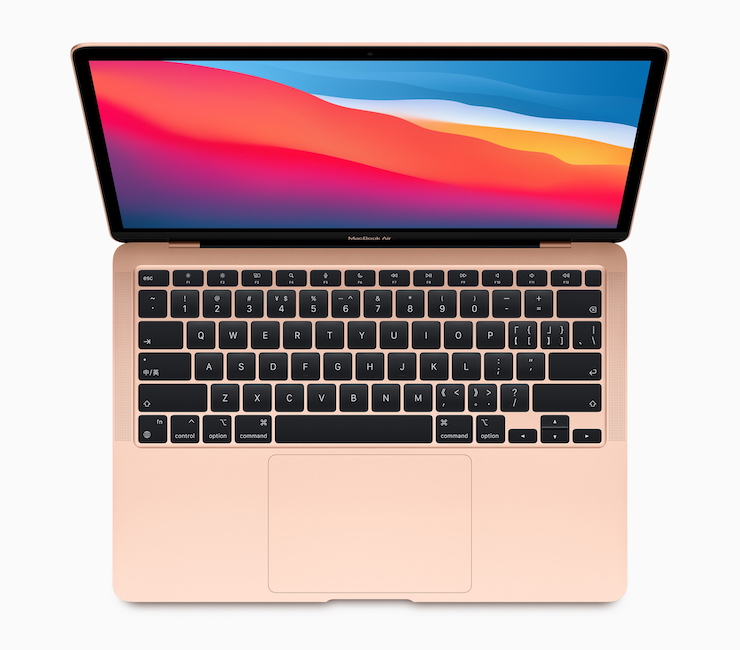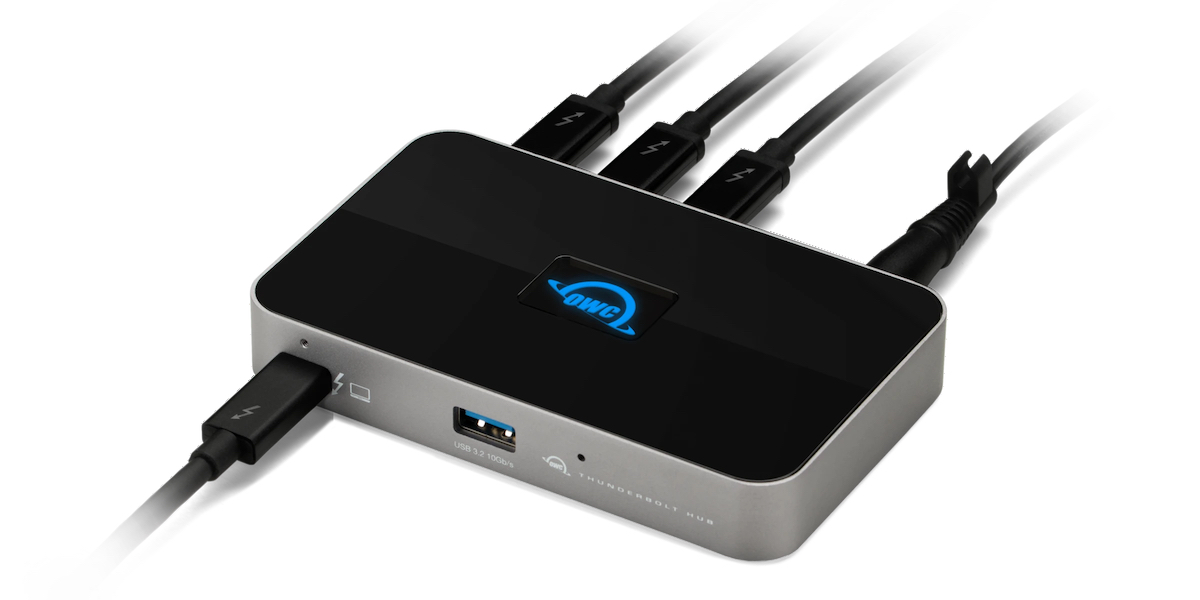|
|
Saturday Notes: Apple Drags its Feet Here; Big Sur Icon BlandnessBy Graham K. Rogers
He has been looking at the top iPhone recently, particularly with regard to its camera and has written a useful article that appeared online. It was also picked up by PetaPixel. I am linking to the full article on the Halide Blog. He explains that one of the secrets of the new quality output is the 47% larger sensor. de With takes some time to examine this and the f /1.6 aperture, as well as comparing output. This is particularly notable in low light conditions. An example is an inside image taken handheld over 3 seconds. Sharpness is incredible. I normally consider that if a shot needs a time less than 1/30 the camera needs support. 3 seconds and I would be in blursville. The article also looks at the forthcoming Apple RAW and how this will affect the Halide app. de With is understandably enthusiastic about the future.
 M-1 Series Macs - Image courtesy of Apple
Unusually all of the reviews are positive, although there are a couple of small problems. The first is for me, because despite these deliveries worldwide, the order buttons on the Thai online store pages remain firmly grayed out. This is the same for the online store in Malaysia, while Vietnam does not yet have the new Macs listed. Singapore are already selling them. Another problem concerns those who have tried to reinstall Big Sur on new Macs (Juli Clover, MacRumors). Some people have operational requirements that may need them to remove certain parts or certain apps so reinstall right away. I had done that when some Macs were supplied a few years back with the setup having been run and several apps that I did not want had been installed. The seller thought this was helpful: they provided me with Macs sealed in the box thereafter. Those users who reinstalled Big Sur on the new Macs found that during the process, the screen went blank, there was a warning and nothing more happens. Apple is aware and it is expected that some sort of fix will be provided fairly soon. There was also a problem with the Universal Chrome release which was withdrawn shortly after becoming available. Again, a fix should be coming soon. What appears to be a similar black screen problem with older MacBook Pro models has been addressed (AppleInsider). The document clearly refers to the older Macs.

Pixelmator Pro 2.0
I had similar thoughts on the A-series a few years back when it was clear how Apple could control what was on the chips, rather than be limited by Intel or AMD. An example of this is how the T-chip and the Secure Enclave are now incorporated into the architecture of the M-series. If it adds another parameter, industry developers may not discover any new capabilities for weeks, then they would have to act. After a useful history lesson, Hruska notes that "Nothing about the M1's thermals, die size, power consumption, or core count suggests that Apple can't keep scaling this chip." What we have in the initial releases (MacBook Air, MacBook Pro, Mac mini) is the start. Apple has said it will be moving all of its devices to Apple Silicon. We do not even know if further Apple Silicon will be designated M-series. The iMacs and Pro computers could have a different series. Apple plays its cards close to the corporate chest.
 M-1 Series Macs: MacBook Air - Image courtesy of Apple
I always look forward to a couple of articles on any new product: those from AnandTech who give a thorough technical analysis; and from iFixit who pull any new device to pieces and consider repairability (see above). The AnandTech report on the new M-series Mac mini arrived during the week. It is is 7 parts: each examining a specific technical area of the computer. It is worth reading if you like that sort of content, but you can skip to the Conclusion and read the enthusiastic,
What's really important for the general public and Apple's success is the fact that the performance of the M1 doesn't feel any different than if you were using a very high-end Intel or AMD CPU. Apple achieving this in-house with their own design is a paradigm shift, and in the future will allow them to achieve a certain level of software-hardware vertical integration that just hasn't been seen before and isn't achieved yet by anybody else.
This week, I saw a link in an online article that took me to MacSales where there was an OWC Thunderbolt Hub with a thunderbolt cable (Thunderbolt 4 + USB-A) which looked just like what I want. They are taking pre-orders for December release, so put that on my list right away. Having visited a number of such sites, the purchase process was quite easy and only took a couple of minutes. Looking round later I saw this company has much more that I am likely to be interested in, in terms of abilities to connect via Thunderbolt 3.
 OWC Thunderbolt Hub
Apple's Wireless Diagnostics app is now clear with a sharp blue background. Music, App Store and System Preferences appear unchanged. Photos has had a white background for a while but with its large rainbow flower that is easy to spot. Calendar has a large red banner, while the yellow banner of Notes (and its off white hue) has been around for a while.

There has been some pressure of late, especially with regard to open developer's dispute with Cupertino which is approaching the courts. Last week Apple moved the goalposts and has now announced that those developers with income less than $1 million per annum will in future be charged a 15% fee. That will make a considerable difference to those, with Halide developers saying this would have made a major difference to the time it took them to make app development the day job. Of course not everyone is happy with some larger companies suggesting that their fees of several millions each year should also be treated in a special way. Microsoft, while not commenting so far, has in the past balked at the 30% - apps and subscriptions. Companies of that size might well negotiate for special treatment although Apple had stuck to its guns for a long time, only relaxing slightly over subscription renewals. Now the bets are off.
Graham K. Rogers teaches at the Faculty of Engineering, Mahidol University in Thailand. He wrote in the Bangkok Post, Database supplement on IT subjects. For the last seven years of Database he wrote a column on Apple and Macs. After 3 years writing a column in the Life supplement, he is now no longer associated with the Bangkok Post. He can be followed on Twitter (@extensions_th) |
|


